Vietnam is a country of striking contrasts, and these contrasts are even reflected in its national beverages. On one hand, there's the
captivating aroma of coffee, inviting contemplation and a moment of pause. On the other, the
sparkling freshness of beer, synonymous with conviviality and shared moments. Come with me, and let's dive into the history and culture of these two liquids that permeate
Vietnamese life.
 World Coffee Museum - Buon Ma Thuot - Mr Linh's Adventures Team
World Coffee Museum - Buon Ma Thuot - Mr Linh's Adventures TeamCoffee: a French love story
Vietnam's love affair with coffee began in the 19th century when French colonists introduced the Robusta coffee plant to the Dragon Country.
One could almost forgive the import of the Vache qui Rit (Laughing Cow cheese) and broccoli in return. Initially cultivated in the North, its cultivation flourished in the Central Highlands, around Buôn Ma Thuột and Đà Lạt, thanks to an ideal climate and volcanic soil. After the relative failure of Arabica, which was less suited to the Vietnamese climate, the Robusta variety dominated and made the country's fortune from the 1920s onwards. What was initially an export crop quickly became an emblematic drink, perfectly adapting to the local climate and habits.
However, wars didn't really stimulate coffee cultivation. It wasn't until the advent of Doi Moi (the Economic Renewal, in the years 1986/1990) and the market economy in its wake, that coffee production truly took off and has continued to grow steadily over the years.
Today,
Vietnam is the second-largest coffee producer in the world, and this drink is much more than a simple beverage: it's a daily ritual, a way of life. Every neighborhood, almost every alley, hides its little quán cà phê where people settle on low stools to observe the incessant ballet of life.
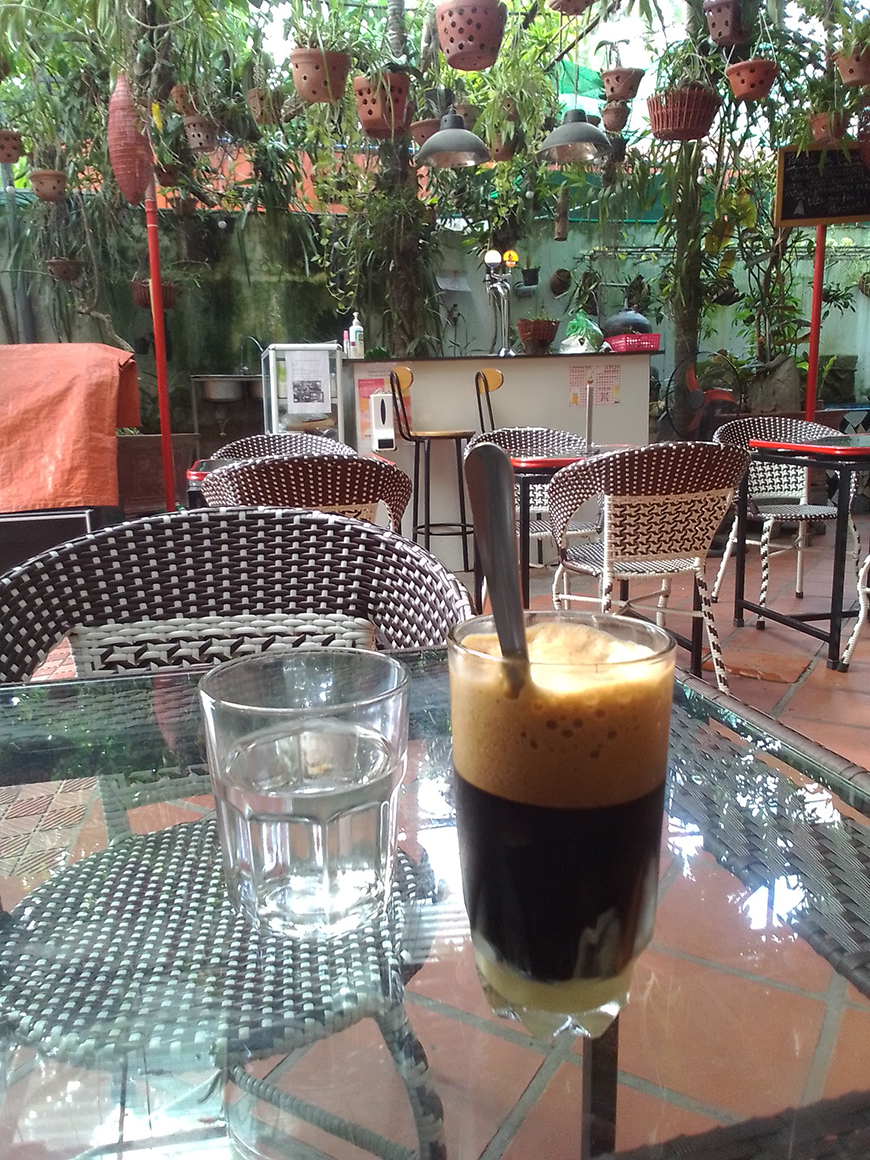 Ca Phe Nau Da - Mr Linh's Adventures Team
Ca Phe Nau Da - Mr Linh's Adventures Team
Vietnamese coffee is distinguished by its slow, drip-by-drip preparation through a small metal filter called a phin. The result is a powerful, full-bodied concentrate that can be endlessly varied:
Cà phê sữa đá (or Cà phê nâu đá in the North): The must-have, a mix of strong coffee, sweetened condensed milk, and ice. A creamy and refreshing delight, perfect for hot days.
Cà phê đen đá: For purists, an iced black coffee, its bitterness softened by the freshness of the ice.
Cà phê trứng: A specialty of the North, especially Hanoi, where a whipped egg yolk with sugar and condensed milk enhances the coffee's gentle bitterness, creating a velvety texture and a unique flavor, somewhat reminiscent of liquid tiramisu.
Cà phê dừa: Coconut coffee, an exotic and sweet option, ideal for those who love gourmet flavors.
These variations demonstrate Vietnamese creativity and ingenuity in embracing and enhancing coffee, making it a drink that is both traditional and surprisingly modern, even avant-garde (I'm thinking of cà phê nước mắm – yes, it exists and it's not bad!)
From coffee as a crop to coffee culture
In Vietnam, drinking coffee is a daily ritual, taking place in a modest stall (sometimes just a ground-floor corner of a house) or in the most refined establishments. From morning to night, coffee brings people together; it's an excuse for reflection, discussion, or reading. It's where a certain art of slowness and contemplation is cultivated. Inherited from French colonization and adapted to the Vietnamese context, coffee culture has reinvented itself and become an essential marker of the art of living. Cafes reflect the richness of the regions, lifestyles, and the unique atmosphere of each city or village, giving coffee a much deeper role than just a simple drink.
Unique flavors and preparations
In Hanoi, cafes are refuges where people meet to chat, read, work, remake the world, or simply watch life go by.
Time is suspended there, to the rhythm of drops from a "phin" filter. This slow process encourages waiting, calm, and slow tasting, transforming each cup into a unique sensory experience. This relative slowness seems to add a rich and complex flavor to the coffee and invites a moment of pause and reflection.
In Saigon, the atmosphere is often more dynamic, with coffee sometimes being enjoyed more quickly, in modern, very Americanized, flashy environments.
Who in Ho Chi Minh City still knows the raw, slightly greasy taste of "sock coffee"? Yes, you read that right!
Cà phê vợt Sài Gòn is half a century of tradition where coffee is infused in a piece of cloth that's not unlike a sock! Also called "racket coffee" because of the shape of the "sock holder," it's a popular, no-frills coffee, true to its humble working-class origins, born somewhere in the Chợ Lớn of the 1950s. Here, no air conditioning, no Wi-Fi, just a spot on a sidewalk and a colorful mini-plastic stool, far from the blinking neon lights.
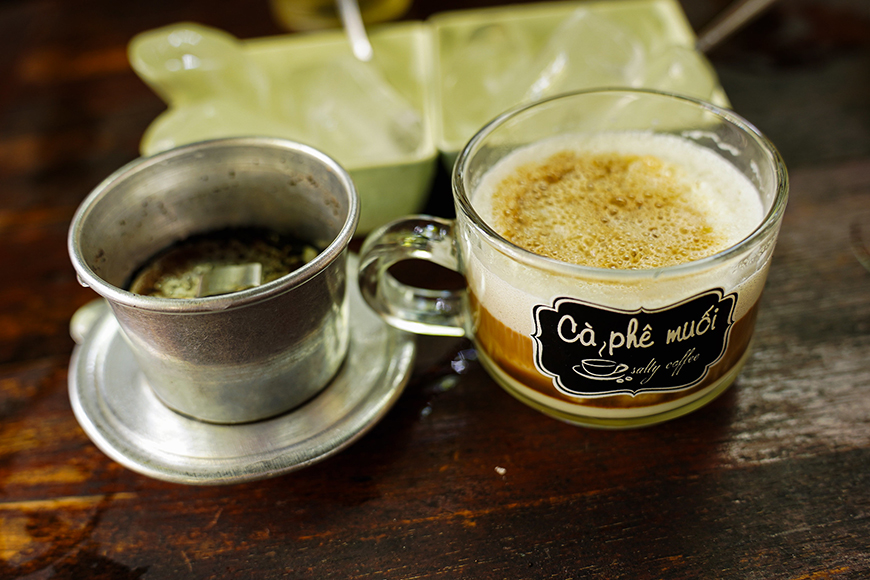 Salty Coffee,a Hue specialty born in the 90s - Mr Linh's Adventures
Salty Coffee,a Hue specialty born in the 90s - Mr Linh's Adventures
And then there's all this cultural and surprisingly creative diversity!
Have you ever tasted
cà phê sữa đá (iced coffee with sweetened condensed milk) or the
famous Hanoi egg coffee? Have you dared to try
Hue's salty coffee or
coffee with caramel or avocado? More conventional are
Cà phê đen (the small, strong, powerful, and full-bodied black coffee) or even
Cà phê Bạc xỉu, a black Robusta coffee mixed with condensed milk and fresh milk, with rich and creamy flavors. An interesting variation is
Cà phê sữa chua, where sweet yogurt and condensed milk are added to a black Robusta coffee base. The whole thing is then blended with ice for a refreshing touch. I almost forgot the exotic
Cà phê cốt dừa, in other words, iced coconut coffee. Not at all healthy but completely addictive, I'll end our caffeine trip with "fat coffee," or
Cà phê kem béo. Imagine a very rich coffee chatting with thick cream, fresh milk, and condensed milk. Got the picture? Come taste it for real!
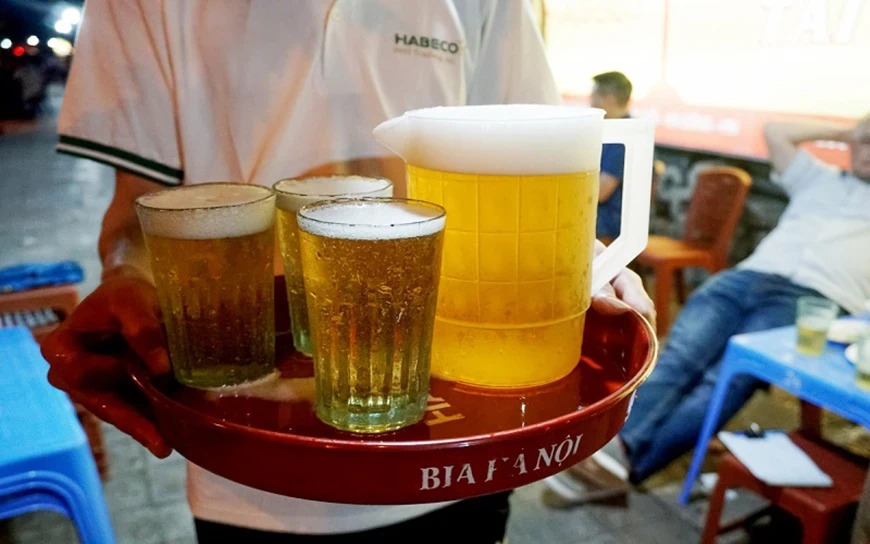 Bia Hoi, conviviality in glasses !
Bia Hoi, conviviality in glasses !Beer: the other national drink
One might retort here that the other national drink is tea. Yes, also. But let's talk about beer, shall we?
Because if coffee invites contemplation, beer, on the other hand, is a call to celebration and conviviality. In Vietnam, beer isn't just a simple drink; it's
a social vehicle, an excuse to gather with colleagues, friends, family, or even perfect strangers (experiences lived by the author of these lines...). It's omnipresent, from small street stalls to elegant restaurants.
The history of beer in Vietnam is also linked to French influence, with the introduction of breweries at the end of the 19th century. It was a certain Alfred Hommel who, in 1890, created the first brewery in Hanoi, with the charitable aim of quenching the thirst of colonial soldiers and civil servants. However, beer quickly developed its own Vietnamese identity, culminating in the phenomenon of
bia hơi. This is quite surprising, knowing that Vietnamese people were much more accustomed to traditional rice alcohols (yes, another national drink). From 30 employees producing 150 liters of beer per day, Hommel's operation grew to employ around three hundred people over the next 45 years. Beer thus gradually became part of the habits of the middle class – meaning Vietnamese people with enough money to show they had the good taste to sip a beer. For the record, in 1957, Mr. Hommel's brewery became state property. This would be the foundation of the Hanoi Beer-Alcohol-Beverage Joint Stock Corporation (HABECO). The very first official Hanoi beer was launched in 1960.
Bia Hơi: the soul of the street
Attention, ladies and gentlemen! Bia hơi is not just a simple draft beer; it's
a cultural institution – what am I saying, a unique experience!
It's a light beer (between 2 and 4%), inexpensive, produced and sold daily, often in lively street bars. The kegs are usually delivered in the morning, and the beer must be consumed quickly to maintain its freshness, as the precious liquid is unpasteurized. It's served in handcrafted glasses made from recycled glass — a symbol of historical resilience— and sitting on small plastic stools, a glass of bia hơi in hand, surrounded by the hustle and bustle of the city, is one of those moments of sharing and relaxation, typical of
a certain "Made in Vietnam" art of living.
 Let's enjoy fresh beer with fried tofu ! Mr Linh's Adventures Team
Let's enjoy fresh beer with fried tofu ! Mr Linh's Adventures TeamFrom popular beer to the rise of craft beers
While bia hơi represents tradition, the emergence of
artisanal microbreweries signals a new era for Vietnamese beer.
In recent years, faced with the growing demand from young urbanites and tourists, Vietnamese microbreweries are emerging, offering craft beers in various styles (IPAs, stouts, beers with local flavors). They are mainly run by passionate brewers, often inspired by Western trends, but not hesitating to incorporate local ingredients and audacious flavors. You might like – or not – beer with tropical spices (lemongrass, ginger), dragon fruit or beverages from brews using local exotic fruits. I'm not here to judge... These beers are positioned at a higher price range, valuing innovation, quality, and taste diversity, and are aimed at an affluent clientele seeking a more sophisticated brewing experience.
Arts of living and social ritual
Whether through the comforting smell of slowly filtering coffee, or the joyful clinking of beer glasses, Vietnam offers a rich and diverse sensory experience. These two drinks, each in their own way, capture the very essence of Vietnamese life: a harmonious blend of tradition and modernity, moments of calm and bursts of joy.
So, the next time you're in Vietnam, what will you choose for your break: a smooth coffee or a refreshing beer?
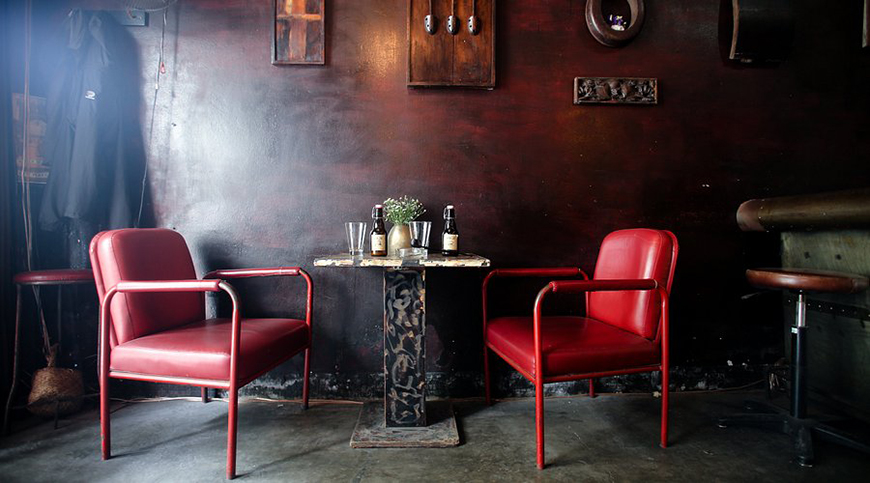 Tadioto, the bohemian café in Hanoi
Tadioto, the bohemian café in HanoiBonus : Our Top Best Café & Bar Experiences
Tadioto (Hoan Kiem)
In 2007, journalist and storyteller Nguyen Qui Duc launched Tadioto, a renowned bar and café in Hanoi.
Located near the Opera, the place bathes in a bohemian atmosphere, where handcrafted furniture alongside works of art. The restaurant offers a wide selection of drinks, including an impressive selection of whiskies, wines and cocktails, as well as a sushi counter that serves high-level Japanese cuisine.
Tadioto is a haven of artistic inspiration, where creative sensibilities converge. This singular place combines visual arts, music and poetry, becoming a cultural sanctuary that attracts an intellectual and diplomatic elite in search of refined exchanges and artistic stimulation.
Address: 24b P. Tông Đản, Tràng Tiền, Hoàn Kiếm, Hà Nội
Price/Person: ₫200,000–300,000
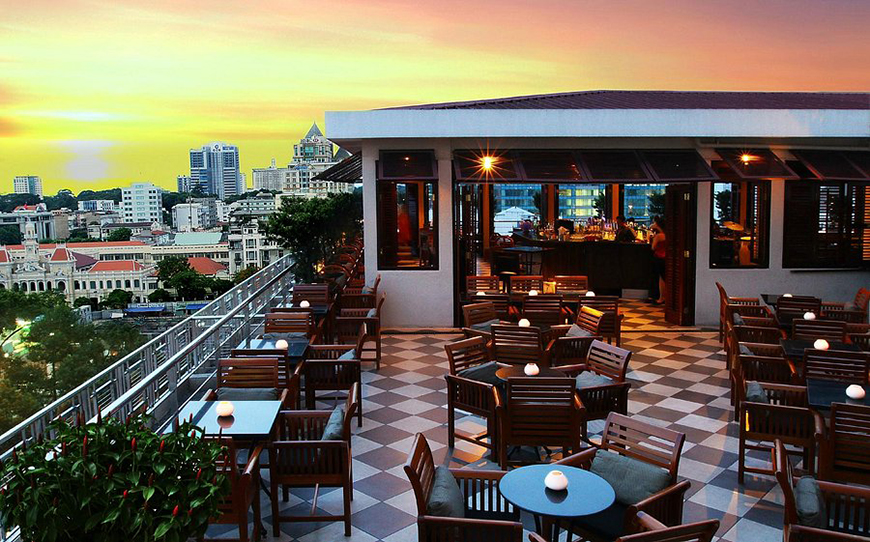 The historic Caravelle café in HCM-City
The historic Caravelle café in HCM-CitySaigon Saigon Rooftop Bar (Caravelle Hotel)
A historic rooftop overlooking the city, silent witness of tumultuous decades. Since 1959, this mythical place has quenched generations of politicians, journalists and soldiers, even defying the dark hours of war.
Today, the establishment masterfully combines tradition and modernity. Its new menu, between Vietnamese cuisine and revisited classics, invites you on a unique taste journey, enhanced by a breathtaking panorama.
A place where history continues to resonate, glass in hand.
Address: 19-23 Lam Son Square, Bến Nghé, Quận 1, Hồ Chí Minh
Price/Person: ₫300,000–400,000
 Beach party at Te Ba - Danang
Beach party at Te Ba - DanangTe Bar (Đà Nẵng)
Nestled on Nguyen Thai Hoc street in Danang, Te Bar is a confidential bar with an intimate and sophisticated atmosphere. Its minimalist decor and soft lighting create a warm atmosphere, ideal for small groups and electronic music lovers.
Specialized in Japanese mixology, the establishment stands out for its creative cocktails, notably its creations based on whisky and sake. The Pho cocktail, a bold signature, perfectly illustrates the innovative approach of bartenders who revisit traditional flavors with originality.
Address: 3rd Floor, 39-41 Nguyễn Thbrasserie Học, Đà Nẵng
Price/Person: ₫100,000 - 200,000
 Coffee plants in bloom, Buon Ma Thuot
Coffee plants in bloom, Buon Ma ThuotCoffee co-op K’Ho (Đà Lạt)
K'Ho Coffee: A family hymn at the café, where tradition and passion have been cultivated for a century. Nestled in the heights of Đà Lạt, this Arabica box tells a story of transmission from grain to cup.
His immersive workshops are more than a simple tasting: it is a sensory journey that reveals the ancestral secrets of roasting. Work, coffee and discovery mingle in a unique experience, where each sip tells the soul of a terroir.
An invitation to understand the art of coffee, much more than just a beverage.
Address: 26 Mạc Đĩnh Chi, Đà Lạt
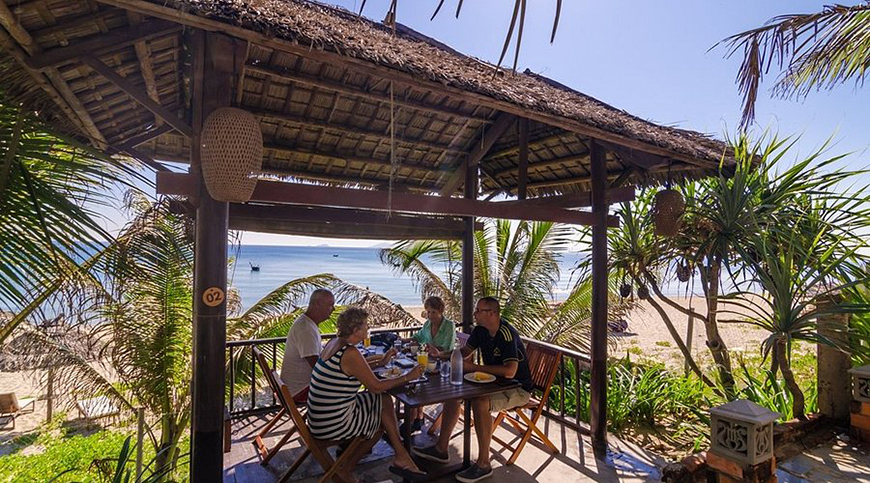 The delicate Sound of Silence, An Bang Beach - Hoi An
The delicate Sound of Silence, An Bang Beach - Hoi AnSound of Silence Coffee Shop (Hội An)
A haven of peace nestled on An Bang beach, where coffee becomes an invitation to travel. Between ancient woods and lush greenery, this setting offers a breathtaking panorama of the infinite sea of Hoi An.
More than a café, it is a living painting where every detail tells a story: sea breezes, counterpoint waves, and a menu of carefully selected cafés.
A refuge where silence speaks louder than words.
Address: 40 Nguyễn Phan Vinh, Cẩm An, Hội An, Quảng Nam
Price/Person: ₫35,000–70,000 the coffee